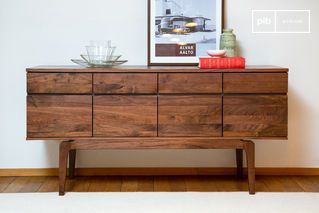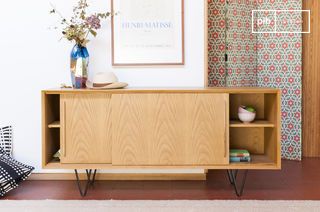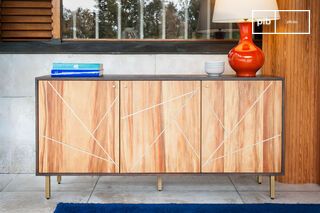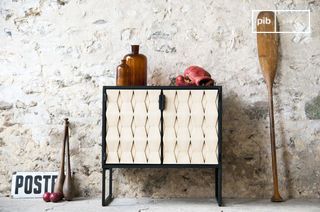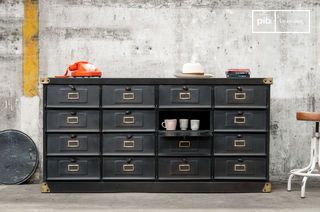Kitchen sideboards
Kitchen sideboards meet a specific storage need in a space subject to daily cleaning constraints. Their structure makes it possible to organize utensils, crockery or non-perishable foodstuffs, while freeing up work surfaces. Formats vary according to the space available, with or without a high niche, open or closed shelves. As a complement to a linear kitchen or dining area, the kitchen buffet structures space and distributes functions without visual overload.
read more >Filters

Functions and layout of the kitchen sideboard
The kitchen sideboard is distinguished by its strictly functional vocation, linked to the specific needs of this room. It offers closed or mixed volumes, often segmented to accommodate objects of different sizes and usage frequencies. It can be used to store plates, glasses, pots and pans or seldom-used appliances. Some models incorporate a high section, offering direct access to lightweight items such as spices, jars or small containers. It can be leaned against a free wall, isolated at the end of a room or placed in continuity with the main furniture.
Internal organization and adapted finishes
The kitchen sideboard offers structured storage, often composed of adjustable shelves, deep drawers or specific modules. The organization aims to optimize accessibility without disrupting circulation. Materials play a functional as well as an aesthetic role. Surfaces are often designed to resist rubbing, splashing and frequent handling. Varnished wood, laminate or painted metal are common, chosen for their ease of maintenance. Shades are kept sober to limit visual overload, in keeping with the often white, black or stainless steel kitchen equipment.
Integration into the overall layout
The kitchen sideboard acts as a complementary element in a larger ensemble. It relieves the need for high or low storage units on the main shelf, providing an independent storage space. In open kitchens, it can also play a transitional role towards the dining room or living room. A low sideboard, aligned with an island or table, provides a slight partition without closing off the space. Its placement depends directly on circulation constraints, available volumes and the level of activity in the room.
The kitchen sideboard fits into a precise daily use. It combines direct utility, storage capacity and formal coherence with the culinary environment and associated circulation.
The kitchen sideboard fits into a precise daily use
